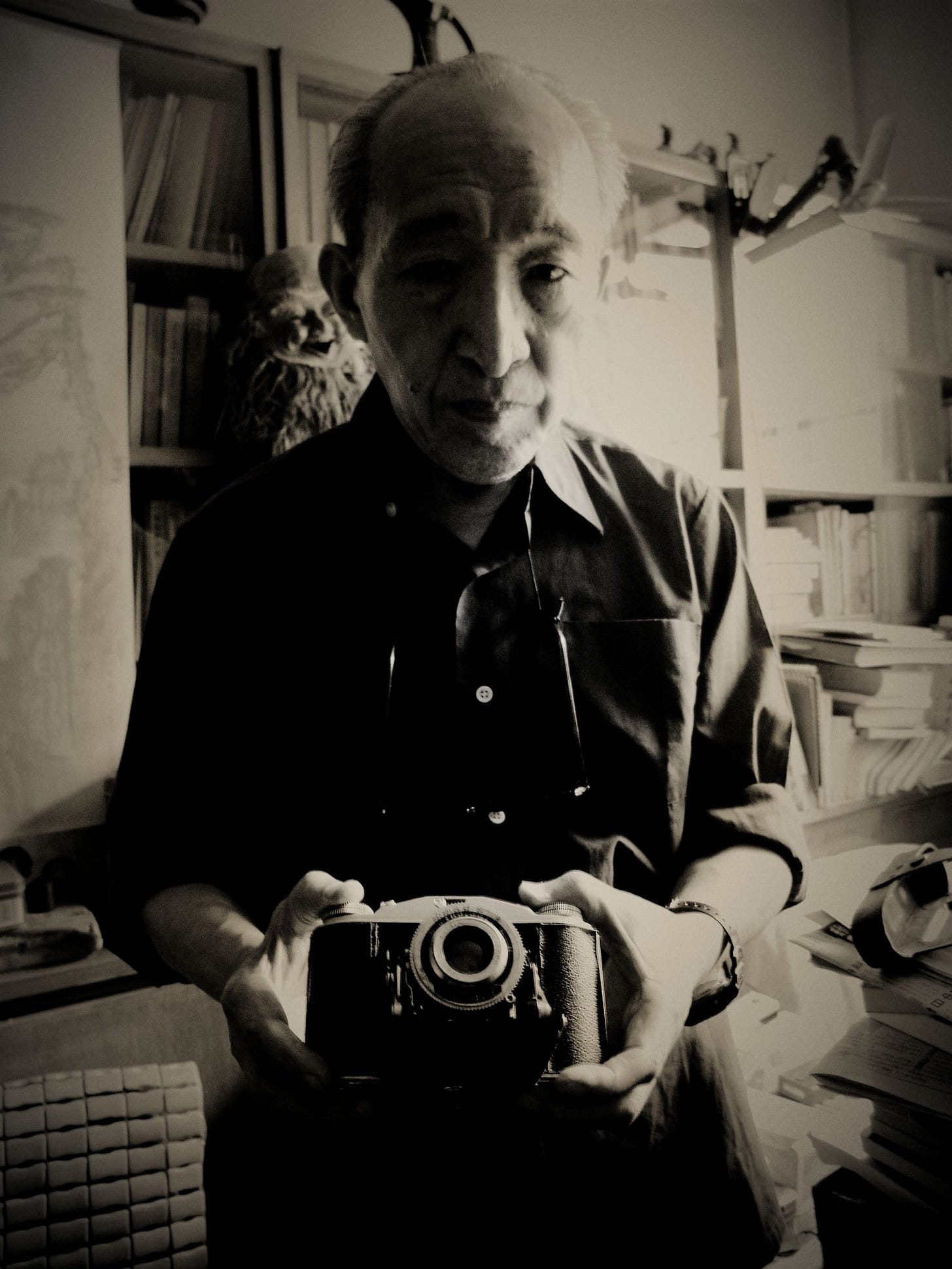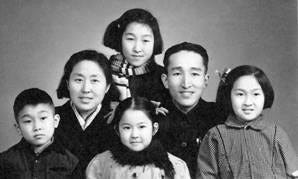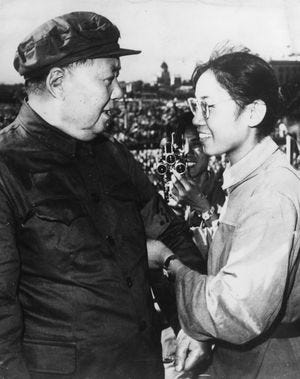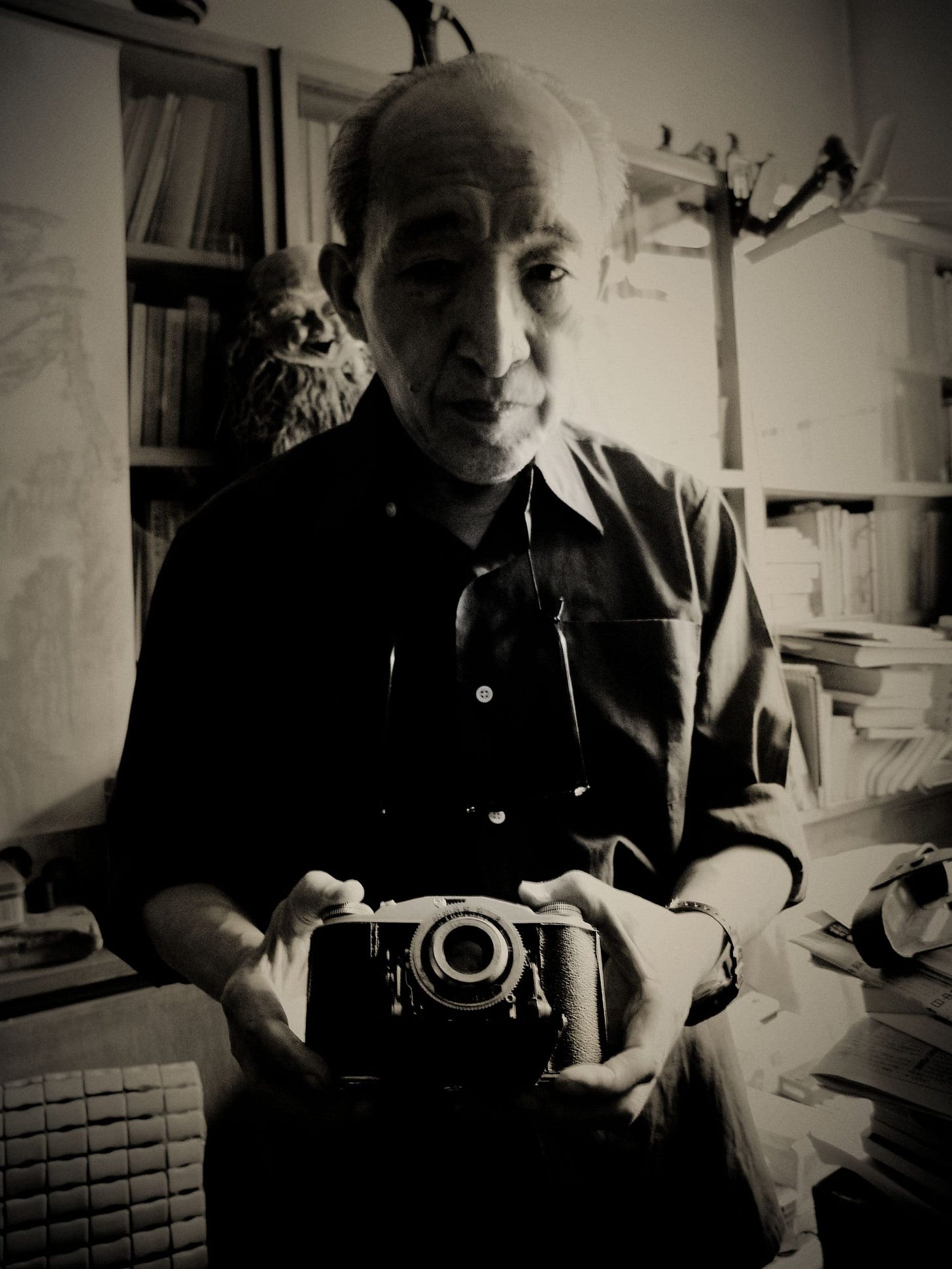《我虽死去》,但审判未至——纪念死于文革“红八月”的中学校长卞仲耘
Though I Am Gone, Judgment Has Not Arrived: Remembering Bian Zhongyun
作者:于飞
By Yu Fei
The English translation follows below.
1966年8月5日,50岁的卞仲耘成为文化大革命中第一位遇害的教育工作者。作为北京师大女附中的党委书记兼副校长,她被自己学校的学生红卫兵们活活打死。
学生对老师的殴打和批斗,其实早在1966年6月文革爆发最初的几周就已开始。卞仲耘之死,意味着血腥“红八月”的到来,也标志着文革暴力的升级。“红八月”,也称“八月杀戮”,一般是指1966年8月和9月间发生在北京的一系列杀戮事件,杀戮者主要是被官方煽动起来的红卫兵。随着1966年8月18日毛泽东在天安门接见红卫兵代表,北京的文革屠杀狂潮更甚。据官方数据,仅在1966年8月至9月,北京就有1700多人被杀害。
作为一名“90后”,我第一次听到卞仲耘的故事,是在高中的历史课堂上。从时间上来说,文革离我们这一代人已过去了将近40年,显得非常遥远。空间上,它又似乎近在咫尺:当年的红卫兵,大多都是中学生,他们殴打、批斗甚至残害自己师长的现场,大多就在中学校园里。中国的历史教科书对文革这样所谓的“敏感”话题确实总是一笔带过,但十几年前,大约在2010年前后,得益于当时相对宽松的政治氛围,在我的高中,有不止一名历史老师会用多节课的时间为同学们详细地讲述文革。
或许是因为身处北京,卞仲耘之死又是一个北京文革历史中绕不过去的事件,所以我们早早就从历史老师的讲述中知道了卞仲耘的悲惨遭遇。但年少的我们,始终无法想象学生——尤其是十几岁的女学生怎么可能如此凶残地打死老师。也许是为了帮助更多的学生了解文革,我的高中老师在一天放学后,为同学们放映了独立导演胡杰的纪录片《我虽死去》。
《我虽死去》制作完成于2006年,当时正值文革爆发40周年。该纪录片于2007年首映,于2008年获香港首届“华语纪录片节”长片组冠军。在中国,文革一直是高度敏感的话题,而《我虽死去》现在大概已经不能在中国公开放映。而我是幸运的,正是因为老师的勇敢,我才能在中学时代就看到这部影片,并深受震撼。
纪录片《我虽死去》,讲述了卞仲耘之死,以及卞仲耘的丈夫王晶垚几十年来记录、记忆、纪念妻子的过程。
胡杰的镜头,呈现了王晶垚承受着巨大痛苦,矢志记录妻子之死的故事。卞仲耘惨死后,王晶垚花掉积蓄买了一个照相机,用图像记录卞仲耘伤痕累累的尸体,以及四个孩子在遗体旁哀悼的场景。在卞仲耘遇害之前,已有学生到她家里抄家,并在家门口和墙上贴满了谩骂卞仲耘的大字报。王晶垚没有撕毁那些大字报,而是用照相机拍摄下大字报的内容,并让大字报存在了两三年。
影片大部分为王晶垚和其他目击者直对镜头陈述的黑白影像。为数不多的彩色镜头,是穿插在影片中的文革影像资料。文革爆发时的群情激愤,以及红卫兵们高昂的“斗志”,与王晶垚的悲伤和其他目击者的证词形成鲜明对比。在中国,因为对文革造成的巨大破坏始终没有真正的清算与反思,以及一些官方叙事的引导,对文革乌托邦想象的玫瑰色调,至今存在(例如对“知青岁月”的美化与怀念等)。但是,如果看过这部沉重的纪录片,相信没有人还能将“应该再来一次文革”这样的话说出口。王晶垚的摄影记录,以及胡杰的寻访,让卞仲耘这个名字不仅仅只是一个文革中的死亡数字,而成为一个后人必须正视的、血淋淋的教训。
观看《我虽死去》,我也会不由自主地想到我的爷爷、奶奶、姥姥和姥爷,他们四位都做了一辈子的老师。在文革爆发时,他们都是校领导,和卞仲耘一样,首当其冲面临着被批斗和殴打,甚至失去生命的风险。
小时候,我并不理解祖辈这些遭遇的含义。直到上了高中,受到一些老师的启发和鼓励,我才利用假期时间,去采访祖辈,听他们讲文革时期的经历。爷爷和奶奶受到被我采访的启发,还曾写下自己的回忆录。
文革爆发时,奶奶是一所小学的校长,她也因此成为她所在城市第一个被游街的老师。而我的爷爷受到了长期的关押、毒打,九死一生,晚年抱怨身体疼痛,说是文革时期遭虐待落下的后遗症。
我的姥姥和姥爷当时在一所学校工作,于是经常被一起批斗。姥姥还被学生羞辱,剃成“阴阳头”(即头发一半被剃秃,一半保留)。不过,文革中的恐惧,似乎加快了姥姥记忆的消退。她对文革的描述,十分平淡,没有很多令人惊心动魄的细节。也许,遗忘也是中国人对待历史创伤的一种方式,甚至是大部分人疗伤的选择。
和很多中国人回避历史创伤的态度不同,《我虽死去》的导演胡杰和片中主人公王晶垚,都选择了直面痛苦,并展现出拒绝遗忘和拒绝妥协的态度。尽管《我虽死去》看上去只是平实的记录,但如同胡杰的其它影片一样,它显示着一种强烈的道德感。这是因为,在一个历史记忆面临系统性压制的地方,选择记录和记忆本身,就是一个基于道义的选择。
除了图像资料,王晶垚还保存了许多当时的文档,以及卞仲耘的遗物。在影片的最后,王晶垚打开一个几十年未打开过的手提箱,向胡杰的镜头展示卞仲耘的遗物,包括她遇害时沾满血迹的衣物。胡杰问道:“你觉得这些东西将来是要保留在文革博物馆的吗?”不等胡杰问完,王晶垚不假思索地回答道:“那当然是。”
在制作《我虽死去》的过程中,胡杰联系到了多名当年亲手殴打老师的学生,但是没有一个人答应接受采访。殴打卞仲耘的参与者之一,是所在的师大女附中最广为人知的校友——宋彬彬。卞仲耘被众多学生打死时,宋彬彬正是师大女附中的红卫兵领袖。
1966年8月18日,宋彬彬在天安门城楼上给毛泽东佩戴红卫兵袖章。毛泽东听到宋的名字是“彬彬有礼”的“彬彬”时,当即说到:“要武嘛。”“要武”,即“伟大领袖”亲自鼓吹武力,煽动暴力。从此,红色恐怖正式降临,文革浩劫的浪潮要等到十年后才能退去。
宋彬彬作为红二代,1980年代移居美国,在2014年曾就自己在文革中的行为发表道歉。但是,在她道歉的语言中,只有借口和开脱,并没有承担责任的诚意。舆论对宋彬彬的道歉给予很多批评,王晶垚则以“虚伪”一词形容宋彬彬的道歉。
其实,最应该为文革担责并道歉的,就是毛泽东。而在毛泽东死后,这个道歉与和解的责任实际落在了毛泽东所代表的政党和政权头上。事实上,文革中冤死的人,大多都和卞仲耘一样,当时是忠于共产党、忠于毛泽东的人士。遭到如此的背叛和惨绝人寰虐待的他们,何时才能得到这个政权的道歉?
《我虽死去》的标题,取自前苏联作家帕斯捷尔纳克长篇小说《日瓦戈医生》的尾声诗篇:
“我虽死去
但三日之后就要复活
仿佛那水流急湍
也像那络绎的商队不断
世世代代将走出黑暗
承受我的审判”
诗中的“我”是耶稣,“审判”则是神的审判。这个标题的灵感,大概来自于胡杰镜头捕捉到的一幕——王晶垚家里摆放着许多印着基督圣画的瓷器。王晶垚解释到,这是因为他青年时期上的燕京大学是教会学校,他也受到宗教精神的感召,受到爱的感染,虽然他自己依然是无神论者。
经常有人说,历史是中国人的宗教。王晶垚虽然没有宗教信仰,但从他的记录中,我们可以看出,王晶垚信仰的是历史,因为他相信历史最终会带来正义。今天的我们,从王晶垚和胡杰坚持的意义上,或许也可以说,卞仲耘和无数的文革受害者,不管是已经死去,还是至今幸存,都在等待历史最终的公正审判。
本期推荐档案:
Though I Am Gone, Judgment Has Not Arrived: Remembering Bian Zhongyun
By Yu Fei
Nearly six decades ago, on August 5, 1966, 50-year-old Bian Zhongyun became the first educator murdered during the Cultural Revolution. As the party secretary and vice principal of the all-girls Affiliated Middle School of Beijing Normal University, she was killed by a mob of Red Guards who were students from her own school.
Student assaults and denunciations of teachers had already begun in the initial weeks after the Cultural Revolution broke out in June 1966. Bian’s death signaled the arrival of Beijing’s bloody “Red August” and marked a dangerous escalation of violence in the Cultural Revolution. “Red August,” also known as the “August Massacres,” refers to a series of killings in Beijing during the early days of the Cultural Revolution, primarily carried out by Red Guards incited by the authorities. Following Mao Zedong’s reception of Red Guard representatives in Tiananmen on August 18, 1966, the wave of Cultural Revolution massacres in Beijing intensified. According to official figures alone, over 1,700 people were killed in Beijing in August and September 1966.
As a Chinese person born in the 1990s, I first heard Bian’s story in a high school history class. Chronologically, the Cultural Revolution feels far removed from my generation. Spatially, however, it feels incredibly close: the scenes where they beat, denounced, and brutalized their teachers largely took place on the same Beijing secondary school campuses we inhabited. Chinese history textbooks tend to gloss over so-called “sensitive” topics like the Cultural Revolution. However, a little over a decade ago, around 2010, thanks to a relatively relaxed political atmosphere, more than one history teacher at my high school dedicated several classes to thoroughly explaining the Cultural Revolution.
Perhaps because we were in Beijing, and Bian’s death is an unavoidable subject of the Cultural Revolution in Beijing, we learned about her tragic fate early on from our history teachers. But as young students, we simply couldn’t imagine how students, especially teenage girls, could be so brutal as to beat a teacher to death. To help more students understand the Cultural Revolution, my high school teacher screened independent director Hu Jie’s documentary Though I Am Gone for us after school one day.
Though I Am Gone was completed in 2006, coinciding with the 40th anniversary of the Cultural Revolution’s outbreak. The documentary premiered in 2007 and won first prize in the feature film category at the inaugural “Chinese Documentary Festival” in Hong Kong in 2008. In China, the Cultural Revolution has always been a highly sensitive topic, and Though I Am Gone can no longer be publicly screened there. I was fortunate; it was thanks to my teacher’s bravery that I was able to see this film during my high school years, and it left a deep impression.
Though I Am Gone tells the story of Bian’s death and her husband Wang Jingyao’s decades-long process of documenting, remembering, and commemorating his wife.
Hu Jie’s camera captures the immense pain Wang endured while being steadfastly committed to recording Bian’s death. After Bian’s tragic killing, Wang spent a sizable part of his savings buying a camera to photograph her body and the scene of their four children mourning beside her. Before Bian was murdered, students had already ransacked her home and plastered the doorway and walls with big-character posters slandering her. Wang didn’t tear down these posters; instead, he photographed their contents and allowed them to remain for two or three years.
Most of the film consists of interviews with Wang and other eyewitnesses speaking directly to the camera shot in black and white. The few color shots are archival footage from the Cultural Revolution interspersed throughout the film. The fervent emotions and high fighting spirit of the Red Guards at the outbreak of the Cultural Revolution contrast sharply with Wang’s grief and the testimonies of other eyewitnesses.
In China, due to the lack of genuine reckoning on the immense losses caused by the Cultural Revolution, and influenced by official narratives, a rose-tinted, utopian perception of the Cultural Revolution still lingers in public discourse. However, after witnessing Wang’s record of his wife’s death and watching this poignant documentary, who could call for the Cultural Revolution to happen again (as some Chinese people do today)? It is precisely because of Wang’s photographic record and Hu’s extensive interviews that Bian is not merely a statistic of death during the Cultural Revolution, but a bloody, irrefutable fact that future generations must confront.
Watching Though I Am Gone, I couldn’t help but think of my grandparents on both sides; all four of them were teachers for their entire careers. When the Cultural Revolution broke out, they were all school leaders and, like Bian Zhongyun, were among the first to face denunciations in what became known as “struggle sessions” in the Cultural Revolution.
As a child, I didn’t understand the meaning of their “struggle sessions.” It wasn’t until high school, inspired and encouraged by some teachers, that I used my vacation time to interview my grandparents and listen to their experiences during the Cultural Revolution. Inspired by my interviews, my paternal grandparents even wrote their memoirs.
When the Cultural Revolution began, my paternal grandmother was a primary school principal, and she became the first teacher in her city to be paraded through the streets. My paternal grandfather was subjected to prolonged detention and severe beatings, narrowly escaping death on many occasions. In his later years, he complained of aches all over his body, attributing them to the lingering effects of the abuse he suffered during the Cultural Revolution.
My maternal grandmother and grandfather worked at the same school and were often denounced together. My maternal grandmother was even humiliated by students, her head shaved into what was called a “yin-yang head” (meaning half her hair was shaved off, while the other half remained). However, the fear of the Cultural Revolution seemed to accelerate my maternal grandmother’s forgetfulness. Her descriptions of the Cultural Revolution were plain and lacking in details. Perhaps forgetting is also a way for people to cope with historical trauma and a choice for many to heal.
Though I Am Gone, however, chooses never to forget. Both director Hu Jie and protagonist Wang Jingyao display an uncompromising attitude towards forgetting throughout the film. Although Though I Am Gone appears to be a straightforward record, like Hu’s other films it also exhibits a strong sense of morality. This is because, in a place where historical memory faces systematic suppression, the act of choosing to record and remember is itself a moral choice.
In addition to photographic materials, Wang also preserved many documents from that time, as well as Bian’s belongings. At the end of the film, Wang opens a briefcase that had not been opened for decades, showing Bian’s belongings to Hu Jie’s camera, including her blood-stained clothes from when she was murdered. Hu asks, “Do you think these things will be preserved in a Cultural Revolution museum in the future?” Before Hu could finish his question, Wang answers without hesitation, “Of course they will.”
During the making of Though I Am Gone, Hu Jie contacted several students who had beaten their teachers back then, but not one agreed to be interviewed for the film. Among those who participated in the violence was the most widely known alumna of Bian’s all-girls school—Song Binbin. When Bian was beaten to death by numerous students, Song was a Red Guard leader.
On August 18, 1966, Song pinned a Red Guard armband on Mao Zedong on the Tiananmen Gate. When Mao heard that Song’s given name “Binbin” meant “refined and courteous,” he immediately suggested changing her name to “Yaowu” – “You need to use force.” “You need to use force” meant that Mao himself was inciting violence. From then on, the Red Terror officially descended on China, and the tide of the Cultural Revolution’s catastrophe would not recede for another decade.
Song Binbin, as a “princeling” (child of a high-ranking Communist Party official), moved to the United States in the 1980s and issued an apology in 2014 for her actions during the Cultural Revolution. However, in her apology, there were only excuses and rationalizations, without the sincerity of taking responsibility. In response, many heavily criticized Song’s apology, and Wang Jingyao described Song’s apology as “hypocritical.”
The one person who should truly bear responsibility and apologize for the Cultural Revolution is Mao Zedong. After Mao’s death, this responsibility for apology and reconciliation effectively fell upon the Chinese Communist Party. What’s more, most of those killed during the Cultural Revolution, like Bian Zhongyun, were individuals who had been faithful to the Communist Party and Mao. When will they, who suffered such betrayal and inhumane cruelty, receive an apology from this regime?
The title of Though I Am Gone is taken from the concluding poem of Boris Pasternak’s novel Doctor Zhivago:
“Though I am gone,
I shall rise again three days after,
And, even as rafts float down a river,
So shall the centuries drift, trailing like a caravan,
Coming for judgment, out of the dark, to me.”
The “I” in the poem is Jesus Christ, and the “judgment” is divine. The inspiration for this title likely came from the many porcelain pieces with Christian holy paintings that Hu’s camera captured in Wang’s home. Wang explained that this was because Yenching University, which he attended in his youth together with Bian, was a missionary school, and he was moved by religious spirit and inspired by love. However, Wang stated that he remained an atheist.
Many people have observed that history is the religion of the Chinese people. Although Wang Jingyao is an atheist, we can see from his records that he believes in history, because he trusts that history will ultimately bring justice. As people like Wang Jingyao and Hu Jie persisted, we might also say that although Bian Zhongyun and millions of other victims of the Cultural Revolution are gone, history will ultimately deliver its final judgment.
Recommended archive:









Once again, thank you for documenting the CCP’s Crimes Against Its Own Humanity (Democide).
Your link to the documentary has only English subtitles. Here is the documentary with spoken English and subtitles:
Though I am Gone (English Dub & A.I. upscale). Thoughts on Things and Stuff. 1:10:28
Pioneering filmmaker Hu Jie uncovers the tragic story of a teacher beaten to death by her students during the Cultural Revolution. In 1966, the Cultural Revolution exploded throughout China, as Mao's Red Guards persecuted suspected Rightists. Bian Zhongyun, the vice principal of a prestigious school in Beijing, was beaten to death by her own students, becoming one of the first victims of the revolutionary violence that would engulf the entire nation. In THOUGH I AM GONE, Hu draws upon photographs taken by Bian's husband, Wang Jingyao, whose impulse to document his wife's death makes him a spiritual forebear to Hu's fearless work. Hu also incorporates vivid accounts from surviving witnesses and archival footage to depict the deadly madness of the era. "One of the Cultural Revolution's most shocking and perplexing cases. We can only imagine how difficult it is for Hu to produce his films; only a committed person who takes what he does as a 'calling' can persist." —Dr. Weili Yu, Yale University, in the journal Asian Educational Media Servic
https://www.youtube.com/watch?v=R0YvJPDYvbw
Get free, stay free and help others to do the same.